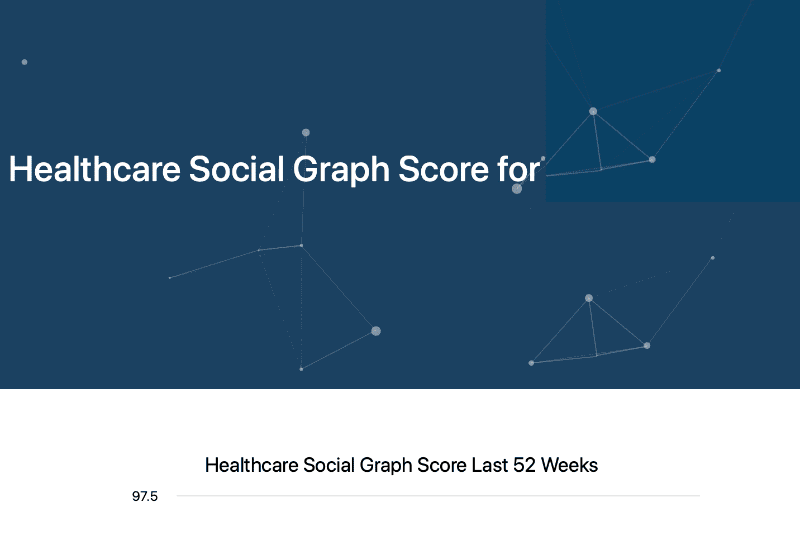Today we’re incredibly excited to announce that we’ve made the Healthcare Social Graph Score publicly available. Healthcare stakeholders can now look up their own score and also see its development over time. It’s another free resource from Symplur joining other public tools like the Healthcare Hashtag Project and the Hashtag Finder.
The Purpose of the Healthcare Social Graph Score — Measuring Impact
We made this tool available to the public with two main use cases in mind. It’s a tool for those who want to document their impact in healthcare social media today, and also for those who for professional reasons want to improve their impact in their medical field over time.
Without going into great detail about the methodology, it is important to understand that neither how much you tweet, nor your follower count, nor any other naive metric has any impact on your score whatsoever. The entirety of the score is a result of how others (who themselves have a high impact in healthcare) engage with your output. The score is fully earned — only the content and conversations you create or participate in that make an impact are reflected in the Healthcare Social Graph Score.
This tool is available to all healthcare stakeholder groups, but it has been built for two groups in particular: patient advocates and physicians.
Measuring the Impact of Patient Advocates
Ever since we started collaborating with Stanford Medicine X‘s Everyone Included initiative years ago, and our participation at the Precision Medicine workshop at the White House, we’ve become aware of the need patients have to document their impact on healthcare social media in a trustworthy way. These ePatients often find it hard to provide objective evidence for their achievements as they seek speaker slots, consulting roles, and other engagements in this industry. It is our desire that this Healthcare Social Graph Score might be found useful as one more piece of evidence of the importance and impact of their voices.
Measuring the Impact of Clinicians and Researchers
The social media engagement of physicians, HCPs, researchers and academics is growing rapidly year after year. Social media is now playing a growing role for scholarship, education, information dissemination, and career advancement for physicians. We’re seeing that more and more physicians are creating impactful and important medical content that is exclusively published on social media. And those clinicians that have recognized the emerging role of social media have become influencers in their professions and in the conversations around their medical specialty.
For physicians and other healthcare professionals, there are two main areas of need. Professional development now increasingly includes social media, and there is a need to objectively measure one’s progress. It is also crucial to be able document, on one’s CV, the professional impact that has already been achieved.
More organizations are today providing programs for improving professional impact on social media. Mayo Clinic now runs internal CME classes with this aim. With their invaluable feedback to us ranging from the measurements and the visual presentation of a professional’s impact, we hope that this tool can be useful for all those who are part of such a program or who work independently to increase their impact and move their field.
Secondly, as more time is spent by HCPs publishing social media content and as the importance of this content increases, a question arises about how social media should be reflected in the traditional CV. The job of a CV is to reflect the professional output of an individual and attempt to reflect who that person is. Without listing professional social media output, the CV will have a gap and a growing area of a clinician’s or researcher’s professional practice will be missing.
Our hope is that the Healthcare Social Graph Score will be of value for patient advocates, clinicians, researchers and all healthcare professionals in illuminating part of their social media output and impact.
Thank You to All Who Have Contributed!
The work behind this score has been developed over several years with the feedback of dozens of public and private institutions including universities, governmental offices, medical societies, commercial companies, health systems and most importantly the patient advocates and physicians themselves.
Thank you to all those who have contributed! We look forward to continue building on this together. You can read more about the methodology (only open public data is employed) and background here. For those of you who might find this tool useful, please feel free to look up your own Healthcare Social Graph Score.

